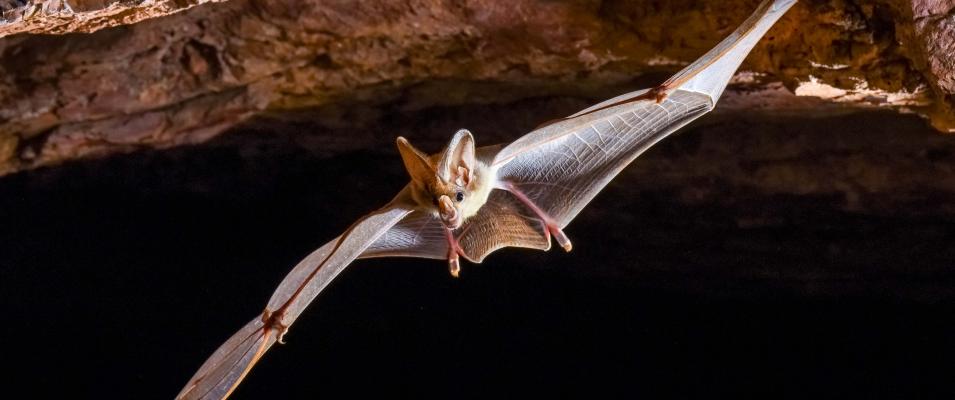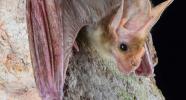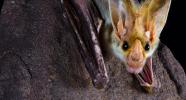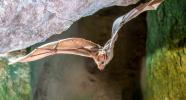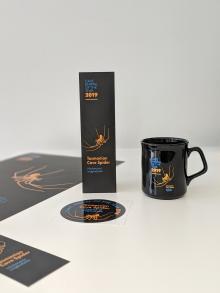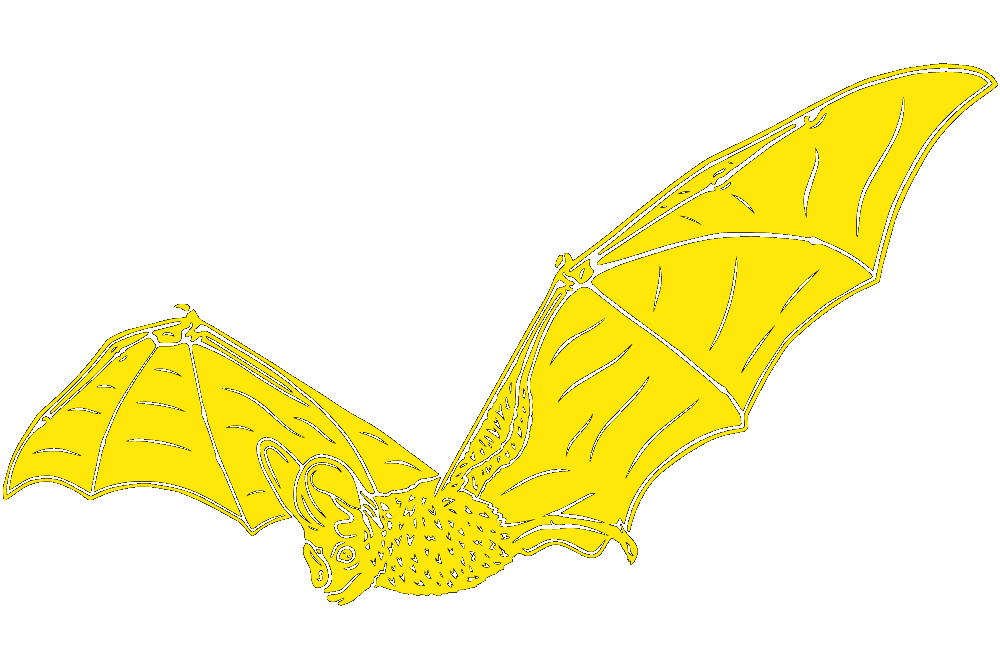
Ghost bat
Batting for bats
Deity or demon? Loved or loathed. Many people have strong ideas about bats. They are often the first, and perhaps the only animal that many people think of in relation to caves. Generally, people know very little about bats and how important they are to humans. Bats help to pollinate our food crops and, by feeding on insects and other invertebrates, can help prevent these animals reaching plaque proportions.
In many ancient cultures mystical powers were attributed to bats such as curing disease and warding off evil. Bats were revered as a god in ancient Central American cultures and a symbol of happiness in ancient Chinese culture. Being creatures of the night and for a long time misunderstood as a ‘strange bird’ or ‘flying mouse’ some cultures have coupled their ignorance of bats with a disdain for them.
Then there’s COVID-19. Have bats bought us this awful illness that has killed so many and changed our lives so drastically?
While we don’t have a definite answer as to what has caused COVID-19, bats might be involved, but the bigger story is that human beings have greatly altered the natural world and our relationships with wild animals so that animal diseases may have crossed over to humans. Solving the problem won’t come by blaming wildlife, but by understanding that failing to consider our impacts on nature comes at our peril.
Meeting our 2022 Australian Cave Animal
Different authors give alternate reasons for the name ‘ghost bat’. Some say it’s for the pale colour of the wing membrane and pale skin, while others link the name to the near white to pale grey colour of the fur.
Ghost bats are endemic to Australia and were once widespread over northern Australia including the arid lands. However, today they are not so widespread and are confined to three separate regions that are all north of the Tropic of Capricorn, all either near the coast or within about 400 kilometres of it.
A prominent feature of ghost bats is their large nose-leaf which is part of the nose itself. Like most other bats, ghost bats use echolocation to navigate, and the ultrasonic waves of echolocation are generated in the larynx. The nose-leaf of the ghost bat is part of the complex system of directing and receiving echolocation to detect prey. Humans are unable to hear the higher frequency calls, but some may be able to hear the lower frequency calls. The ghost bat hears the returning sound waves via its huge ears (which are twice the length of its head!) The ears are joined which keeps them upright when flying, maximising hearing when it’s needed most.
The scientific name of Greek words Macroderma gigas refers to the ghost bats large (macro) skin (derma), that is, the large bare-skinned ears of the ghost bat. While gigas (giant) refers to it being the largest species in its scientific group.
The ghost bat is just one of two Australian bats that are carnivorous and preys on large vertebrates (birds, frogs, lizards and mammals, including mice and smaller-sized species of bats). It has an average adult weight of 150 grams and an average head and body length of 115 millimetres.
Home is often where the caves are
Caves provide important roosting, maternity and wintering habitat for the species. Important ghost bat habitat in northern Australia includes:
- Limestone caves and disused mine shafts in the Pilbara, Tunnel Creek and other locations in the Kimberley.
- Pine Creek, Litchfield National Park, Kakadu National Park, Pungalina and Groote Eylandt in the Northern Territory.
- Caves along the Mitchell and Palmer rivers, Kings Plains and Cape Melville in Cape York.
- Mt Etna Caves National Park and Capricorn Caves near Rockhampton and west to Mt Isa and Camooweal Caves National Park in western Queensland.
The Mt Etna Caves population was at the centre of Australia’s longest running conservation battle which ran from 1966 to 1992. Caves were destroyed for limestone mining to produce cement. Two caves, Speaking Tube and Elephant Hole were destroyed; both were important as maternity and over-wintering caves for ghost bats.
Other important habitat includes abandoned mines and large rocks containing suitable crevices. The largest colony lives in a disused mine shaft at Pine Creek in the Northern Territory.
Batting against ghost bats
Sadly, ghost bats have many threats to their survival. Blasting of caves for mining and clearing of land for farmland has reduced suitable habitat. Rainforest thickets that provide protective habitat have been reduced to small remnants. The environmental weed lantana has replaced native vegetation and can obscure cave entrances and make it difficult for bats to forage and fly around at night. Barbed wire fences are also known to snare ghost bats when they hunt prey low to the ground.
The cane toad, brought to Australia to control beetles in sugarcane plantations, is now a widespread pest across northern Australia. Ghost bats will occasionally prey on cane toads but usually only when their preferred food is scarce. When cane toads are eaten by ghost bats and other native animals, they are killed by poisons in the cane toad. Cane toads have been blamed for the loss of ghost bats at Boodjamulla in north-western Queensland, Kakadu National Park and in the Kimberley.
Conservation status
The species’ range and its population size have both diminished since the first description of ghost bats was published in 1880. A 2017 publication by the CSIRO journal Australian Mammalogy suggested that the Mt Etna area ghost bat population has declined by 79% since the late 1990s.
The ghost bat is listed as endangered under state legislation in South Australia and Queensland, vulnerable under Western Australian legislation and the Commonwealth Environment Protection and Biodiversity Conservation Act 1999, and near threatened in the Northern Territory.
Where to see a ghost bat?
Australian zoos are involved in research and breeding programs to assist ghost bat survival. You can see ghost bats in the nocturnal houses at Taronga Zoo in Sydney, Perth Zoo and the Alice Springs Desert Park.
Learning more
The more we understand ghost bats, the better the chance of their survival. Wikipedia has readily available material and we suggest:
Ghost bat - Wikipedia (which includes a map of the ghost bat’s current range)
Bat - Wikipedia
Animal echolocation - Wikipedia
